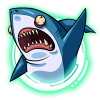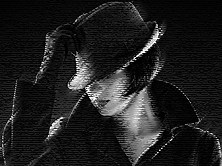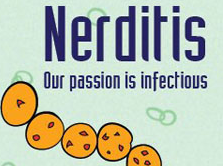Hey, all! Okay, Cthulhu Wars has a few expansions - two new factions, several boxes of monsters, one neutral faction, a bunch of high priest figures, tons of maps, and three boxes of Great Old Ones - with more to come! So look, this is a review of ONE of the Great Old One sets. Volume One. There are three volumes, with five, four, and one figure(s), respetively. They feature more-obscure Lovecraftian monsters, including several by other authors. Volume One has Mother Hydra, Chaugnar Faugn, Yig, Cthugha, and Abhoth. Volume Two has Ghatanathoa, Father Dagon, Atlach-Natha, and Bokrug. Volume Three has Gobogeg, a creature invented for the game. Today's review is about Volume One, but before we get into the figures, let's chat a little about Lovecraft, the Mythos, and other authors! Okay, what I mean is, let's discuss the big elephant in the room (and I don't mean Chaugnar Faugn). Was H. P. Lovecraft a racist? Is his fiction racist? And how should we respond?
Yeah, the big one.
Well, first off, I am not condoning or excusing racism. Period. I'm saying this right here and right now: Racism is bad. I'm not going to repeat this every sentence any more than I'd have to say "Water is wet" while talking about the rain. But this facet of Lovecraft's life deserves analysis. You can't just say "Oh, he's a racist" and shut the book. There are many, many different kinds of racism. The racism of someone who gets nervous when he sees an urban black man is different from the racism of Italian soccer fans who throw bananas and knives at black players, or a Klansman who lynches people, or a Japanese citizen who thinks that Koreans are inferior. I have personally known people who were sweet and nice and kind... except for their racism (that's called The South!), and I have known people who were consumed with venom at the idea of other ethnic groups. Lovecraft's specific type of mental discrimination is worth analysis... but again, I ain't gonna condone it. You got that?
H.P. Lovecraft was a racist. And yes, more people were racist back then, but he was kind of annoying even for the time. He didn't advocate violence, no, but he was heavily xenophobic even for his time. And that's where his racism was rooted - fear of the unknown, of what was alien or foreign. It wasn't as simple as, "He hated black people," or "he thought they were all savage animals." No, when you look at Lovecraft's personal correspondence and diary entries and notes, you will realize that the list of things he hated and feared includes:
-Africans
-Pacific Islanders
-Asians
-Racial mixing
-White Americans
-All religious people
-Seafood
Like I said, he had issues. Lovecraft really only loved the British - as defined through an ideal that never actually included real British people. And the list of "monstrous" things he hated and feared included himself - he had avery strange upbringing in avery strange family, and as a result always considered himself ugly and horrible, like one of the monsters from his stories (in fact, there is ample evidence to suggest that The Shadow Over Innsmouth reflected a little of his own self-image). And his "hate" could really be defined in two words: Disgust and fear. He was utterly terrified and sickened of things that did not fit his particular worldview - as in real genuine terror, and real genuine disgust. To him, such things simply were as wrong as a five-sided square. So when he, an atheist, uses the word "blasphemous" in his story, he didn't mean blasphemous against God, he meant blasphemous against his understanding of the universe.
And that is the key to his fiction.
Again, it's not racims per se, though The Horror at Red Hook is pretty racist, and The Shadow Over Innsmouth has implied miscegenation themes, and The Rats in the Walls has an Embarrassingly-named cat. But for the rest, and the themes overall, he tapped into xenophobia more than racism - the latent fear of the unknown present in all of us. And Lovecraft's gift was in bringing out that fear, and making it real.
The Call of Cthulhu speaks of how the greatest mercy in the universe is the human mind's inability to understand everything, becaue the cosmos is vast and terrifying. And that, again, is the other key - Lovecraft's atheism. Atheist science fiction is built on the powers of human reason and ingenuity, and hope that we will one day ascend to the stars and make the universe our playground, all without the need for anything beyond our understanding. Atheistic horror, on the other hand, looks at the vastness of the universe, and screams in terror. Those things you call gods are in fact aliens so powerful and horrible that we are to them what ants are to us - and who hasn't squashed a few ants? Human ingenuity may look great to us, but we are insignificant in this universe, and its other deniens could roll over us without even thinking. And in that void without meaning, surrounded by horrors unimaginable, is the very core of H. P. Lovecraft's horror.
So what I'm saying is, his fiction tapped into something related to, but beyond his prejudices. Also, he pretty much invented the "Ancient Alien" theory of mankind, as well as going out of his way to explain the gods and devil sand wizard spells in some of his stories as aliens and "strange alien rites and technologies." The "magic" you cast? That's just tech so advanced we can't understand it. By demystifying everything, he also stripped the universe of any sort of grand fate or purpose - those comforts brought by religion, incidentally. And so, yet again, we have atheism as the core of Lovecraft's cosmic horror.
Now, something he did that is not related to racism or xenophobia was, essentially, open-sourcing his fiction. Lovecraft, despite all appearances, had a lot of friends, and mentored other writers. He made it clear that it was okay for people to use his stuff in their work, and vice-versa if allowed - thus, if a friend wrote a horror story, he would name-drop it in his. And friends would toss Necronomicons in their stories, and they had a grand old time. The result of this was that, after Lovecraft's death, many other authors - August Derleth, Clark Ashton Smith, Robert E. Howard, Robert Bloch, Frank Belknap Long, and many others - built upon his universe, creating a movement which would influence pretty much everything scary and be-tentacled forevermore. No, a lot of it seems to be in contradiction with the origial stuff - August Derleth inserted a little bit of Christianity, namely the ideas of Good Versus Evil, and Fate, and reordered the Old Ones as elemental gods. Smith wasn' quite as grandiose, but he ordered the aliens as deities with various domains yet again. And so on, and so on, and so on... but hey, they gave us a gigantic cast of monsters to play around with!
So, who should we respond? I'll leave that up to your own conscience, where it belongs.
But, Back to the Game.
Anyway, in the context of the game, the Great Old Ones are neutral pieces. Any player can summon any one of them, whom he then controls until that Old One is killed. Then it's free to be summoned by anyone again. So, for eaple, when Abhoth paces corruption tokens, that might serve another player if ownership transfers. One of the figures in the Second set, Atlach-Natha, has an instant-win scenario that takes six turns to build up if unmolested, so one player could let another do all the work, and then yank Atlach over in a couple ore turns if the game lasts that long. They all have some means of game-changing, even when it's absurd. Gobogeg from the third set lets you determine which figures and factions to use in the next game. But anyway, this is about the first five Great Old Ones. They are each individually smaller than the Old Ones in the main game, and sculpted in gray plastic. Hilariously, the color gray is absolutely accurate for two of these guys. So, shall we take a look?
ABHOTH
The cretor of all corruption and filth, who dwells in a cavern deep beneath the earth. Abhoth spawns misshappen, irregular creatures - no two "children" are alike! Some are blobs, some arautonomous libs, some are indescribable jumbles of parts, but they are all part of the Filth that is Abhoth. Abhoth first appeared in a Clark Ashton Smith story, and thus he is a latter-author addition to the Mythos - and hilariously, he's actually colored gray! No, really. Abhoth is gray ooze, so this figure matches up. It has a clearly-defined brain and the hint of a torso, though those just may be shapes taken by Abhoth's ooze as it communicates with mortals (Abhoth is somewhat chatty). Those psuedopods, though, are certaily ready to lash around anything within reach and drag it to its doom.
In-game, Abhoth drops Corruption tokens, which can take hits in a fight, and serve to fuel his attack power and deny other players points, thus allowing his player more battlefield control in-game.
CHAUGNAR FAUGN
Created by Frank Belknap Long, Chaugnar Faugn is one of the... lesser Great Old Ones. He's an ancient monstrosity who bears passing resemblance to an elephant (and may be the source of all elephantine deities, thought he closer you look, the more you see that this is not an elephant at all), and is vampiric in nature, using the lamprey-like mouth at the end of his trunk to suck blood from his victims. He physically resembles stone, and falls into a state of hibernation between feedings. Thus, he can be easily mistaken for a stone idol (the coloration is right, haha!). In the story in which he appears, Chaugnar Faugn is brought into a museum as an exhibit, and soon wreaks havoc. So yes, he's less "indefinable cosmic horror" and more "movie monster," but I have to admit that the idea is really fascinating.
Chaugnar Faugn weaponizes the Gates, turning them into attack dice for your minions. He also lets his player take control of the Elder Signs, and dole out their points however said player sees fit.
CTHUGHA
Cthugha is a being of fire, who appears as a massive ball of flame. The coloration is insufficient on this figure for obvious reasons. When August Derleth placed his stamp on the Cthulhu Mythos, he assigned elements to the Elder Gods. Cthugha was invented to have a "fire" elemental. And yes, Derleth's changes to the mythos are highly controversial, but even the people who hate him tend to use a lot of the groundwork he set down... just maybe not the elements bit. But yes, that is seriously what thugha is - a big ball of flame that acts more like a supernatural entry than many other Elder Gods.
In-game, Cthuga's power mirrors other Great Old Ones, and he gives you the ability to "spare" your enemies who woudl otherwise be killed in combat. When you spare enemies, you can then convert those actions into more power and elder signs for you.
MOTHER HYDRA
The consort of Dagon (he's in Set #2), who spawns the Deep Ones. Mother Hydra only had a one-line mention in The Shadow Over Innsmouth, so it's hard to tell if she's meant to be a Great Old One, or just a big fish-monster. Other uthors have filled in the gaps in various ways, and she even made a video game appearance. THis figure is more of a mermaid and less like a bloated fish-monster, though.
In-game, Mother Hydra can move all enemy cultists out of water areas and onto land, and spawn all of your allied cultists at once, changing the face of the game.
YIG
Yig, the Father of Serpents, first appeared in a story by Zealia Bishop (though Lovecraft co-wrote it). He is exactly what the title says. If you show kindness to snakes, Yig will be kind to you. But if you don't, he will slaughter you and mutate your remains into snakes. He is extremely straightforward, almost like a Robert E. Howard monster, and often tends to slither under the radar because of it. But it does seem that, according to the Mythos, all snakes are little cosmic horrors.
In-game, Yig has two basic effects. He can make your cultists poisonous, so that when your opponent kills the, they lose their own forces in retaliation. He can also trigger a sadistic choice, forcing your opponents to either give you power, or doom points.
So, there you go! The first five of the Great Old Ones. They certainly add another layer of complexity to the game, and over time, you will likely see more from this fascinating system. In their own ways, each new author added something to the Cthulhu Mythos, sculpting it beyond Lovecraft's old groundwork. But it maintains that same fear of the unknown, and hopelessness in a vast universe. And even when these aliens seem familiar, in the guises of elephants and fireballs, they turn out to be something far more horrifying than they first appeared.





















